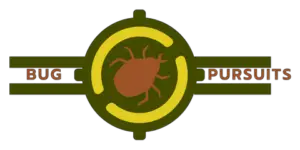Are you looking for an efficient way to get rid of cockroaches in your home? Cockroach fumigation may be the answer you’re looking for.
In this guide, you’ll learn what cockroach fumigation is, its advantages and disadvantages, the types of fumigants used, safety precautions, steps for effective fumigation, and alternatives to fumigation.
Whether you have a severe cockroach infestation or are just looking for a preventive measure, this guide will help you make an informed decision about cockroach fumigation.
Table of Contents
Short Answer
Cockroach fumigation is a method of pest control that uses a chemical called a fumigant to kill cockroaches.
The fumigant is released into the air and the fumes will penetrate cracks and crevices where cockroaches hide.
The fumigant will then kill any living cockroaches and their eggs.
Cockroach fumigation is an effective way to get rid of cockroaches, but it is important to follow safety protocols when using fumigants.
What is Cockroach Fumigation?
Cockroach fumigation is a form of pest control used to eliminate cockroaches from buildings.
It involves introducing a poisonous gas or chemical agent, such as sulfur dioxide or hydrogen cyanide, into an area to kill off cockroaches.
This method is usually more effective than traditional methods of pest control, such as traps or baiting, but it can also be more expensive, depending on the size of the area to be fumigated.
The process of cockroach fumigation begins with the preparation of the area to be fumigated.
This includes sealing off any cracks and crevices where the cockroaches may be hiding, as well as sealing off any areas where the gas is likely to escape.
After the area is prepared, the fumigant is introduced into the area and allowed to sit for a period of time before being ventilated.
The most commonly used fumigants for cockroach fumigation are sulfur dioxide and hydrogen cyanide.
These chemicals are highly toxic and can be dangerous if used improperly.
It is important to follow the directions on the product label, as well as any other safety instructions provided by the fumigation company.
In addition to being more expensive, cockroach fumigation is not recommended for use in certain areas, such as kitchens and food preparation areas.
This is due to the potential health risks associated with the toxic fumes.
It is also important to note that the fumigation process can take several days, depending on the size of the area to be fumigated.
Overall, cockroach fumigation is a highly effective form of pest control, but it is important to understand the risks and use caution when using this method.
It is best to consult with a professional pest control company prior to beginning the process to ensure that it is done safely and effectively.
Advantages of Fumigation

Cockroach fumigation is an effective method for eliminating cockroaches from buildings, and it offers many advantages over traditional methods of pest control.
Fumigation is much more effective than other treatment methods, as it kills both adult cockroaches and their eggs, which makes it more difficult for them to reproduce.
Additionally, fumigation is even effective against cockroaches that are hiding in hard-to-reach places, such as wall cavities and cracks.
Furthermore, fumigation is a fast process, as the fumigant takes effect almost immediately.
This means that the problem can be solved quickly, rather than having to wait for a cockroach infestation to spread.
Finally, fumigation is generally considered to be safe, as long as it is done by a qualified professional and safety guidelines are followed.
Disadvantages of Fumigation
When it comes to getting rid of cockroaches, fumigation is a popular method of pest control for both residential and commercial environments.
It involves introducing a toxic gas into an area to kill the roaches, and it is usually more effective than traditional methods of pest control.
However, there are some downsides to using fumigation that should be considered before deciding to use it.
The first disadvantage of fumigation is the cost.
Fumigation can be much more expensive than traditional methods of pest control and may not be within the budget of some homeowners or businesses.
Additionally, the chemicals used in fumigation can be hazardous to people, pets, and plants, and may require special handling and cleanup procedures that add to the cost.
Another disadvantage of fumigation is that it may not be suitable for use in certain areas, such as kitchens and food preparation areas.
The fumes from the fumigant can be toxic and may contaminate food or cooking surfaces, so it is important to make sure that these areas are well-ventilated and that the fumigant is not used in them.
Finally, fumigation can be time-consuming and disruptive.
Depending on the size of the area to be fumigated, it may take several days for the process to be completed.
During this time, the area may have to be vacated, and furniture, clothing, and other items may need to be removed or covered to protect them from the fumes.
Overall, while fumigation can be an effective way to eliminate cockroaches, it is important to consider the potential disadvantages before deciding to use it.
The cost, the potential for contamination, and the disruption it can cause should all be taken into account.
Types of Fumigants Used

When it comes to cockroach fumigation, there are two main types of fumigants that are commonly used: sulfur dioxide and hydrogen cyanide. Sulfur dioxide is a colorless gas that is used in a variety of industrial applications, including as a fumigant to kill cockroaches. It is highly toxic and can be deadly if inhaled in large quantities. Hydrogen cyanide is an even more toxic gas that is often used in fumigation. It is colorless and odorless, making it difficult to detect in the air. Both types of fumigants are dangerous and should only be used by a professional exterminator.
When selecting a fumigant, it is important to consider the size of the area that needs to be fumigated and the type of cockroach infestation.
For smaller areas, sulfur dioxide is usually the best option as it has a shorter acting time.
For larger areas, hydrogen cyanide is often the preferred choice as it has a longer acting time and is more effective at killing cockroaches.
It is important to note that both types of fumigants are highly toxic and should only be used with extreme caution.
Safety Precautions for Fumigation
When it comes to using a fumigation method for cockroach control, safety should always be a top priority. While fumigation can be a highly effective way to eliminate cockroach infestations, it must be done carefully to prevent harm to human health. Here are some key safety precautions to keep in mind when undertaking a fumigation project:
1. Choose the right product: Before beginning a fumigation project, it is essential to select the right product for the job. Different types of fumigants are available for different areas and levels of infestation. Make sure to read the label carefully and select a product that is safe and appropriate for the area.
2. Ensure proper ventilation: Fumigants can be highly toxic, so proper ventilation is essential. Open all windows and doors to ensure that the gas is distributed evenly and can escape quickly.
3. Use protective gear: When fumigating, it is important to wear protective gear, such as a respirator, gloves, and goggles. This will help to protect against any potential health risks associated with the fumigant.
4. Follow instructions carefully: Fumigation instructions should be followed carefully to ensure the safety of those in the area. Be sure to read the directions carefully and follow them exactly.
5. Keep pets and children away: Make sure to keep pets and children away from the fumigated area until it is safe to enter.
By following these safety precautions, it is possible to achieve a successful cockroach fumigation without putting anyone at risk.
It is important to remember that fumigation can be a dangerous process, so it is essential to use caution and follow the instructions carefully.
Steps for Effective Fumigation

Cockroach fumigation is an effective way to get rid of cockroaches and other unwanted pests in both residential and commercial environments.
To ensure the most effective fumigation, its important to follow a few key steps to make sure the process is safe and effective.
First, its important to identify the areas that need to be fumigated.
This includes any cracks and crevices where cockroaches may be hiding.
Its also important to make sure any food or dishes are removed from the area so that they arent exposed to the poisonous gas.
Next, the fumigant needs to be carefully chosen.
Typically, sulfur dioxide or hydrogen cyanide are used for cockroach fumigation, but other chemicals may be used as well.
Its important to make sure the chemical used is safe for the environment and wont cause any long-term harm to people or animals in the area.
Once the fumigant has been chosen, its time to set up the fumigation equipment.
This includes the gas mask, gas tanks, and other necessary equipment to ensure a safe and effective fumigation process.
Finally, the fumigation process itself should be carefully monitored.
Air quality should be checked regularly and the fumigant should be monitored to ensure its being dispersed properly.
Once the fumigation is complete, the area should be ventilated to ensure all traces of the fumigant have been removed.
By following these steps, you can ensure that your cockroach fumigation is safe and effective and will help keep your environment free from unwanted pests.
Alternatives to Fumigation
When it comes to pest control, fumigation is an effective method of eliminating cockroaches from a building, but it is not the only option.
There are several alternatives to fumigation that can be used to effectively combat cockroach infestations, including the use of traps, baits, and insecticides.
Traps and baits are often used in combination with one another to target both the adult cockroaches and their eggs.
Insecticides can be used to treat walls, cracks, and crevices where cockroaches may be hiding.
These alternatives are usually less expensive and less dangerous than fumigation, but may not be as effective in certain situations, such as large infestations that are spread out over a wide area.
Final Thoughts
Cockroach fumigation is an effective method of pest control that can help keep cockroaches away from your home or business.
While it can be more expensive and require safety precautions, it can be a reliable and effective solution for eliminating cockroaches.
To get the most out of cockroach fumigation, it’s important to research the different types of fumigants available and the steps for effective fumigation.
If this method is not right for you, there are numerous alternatives to consider.
No matter what your needs are, there is a solution that can help keep your space safe and free of cockroaches.

